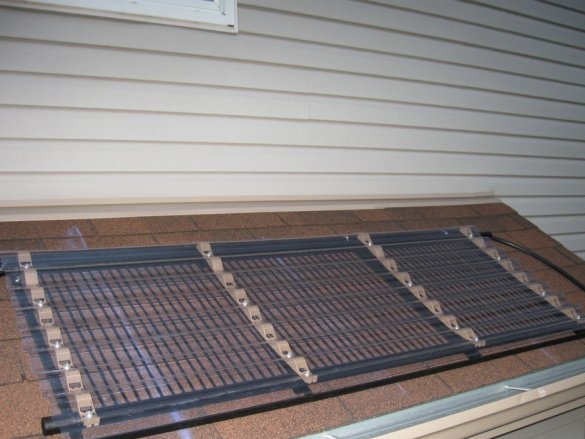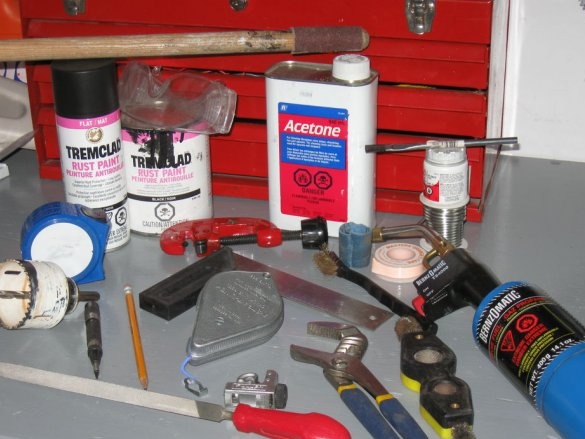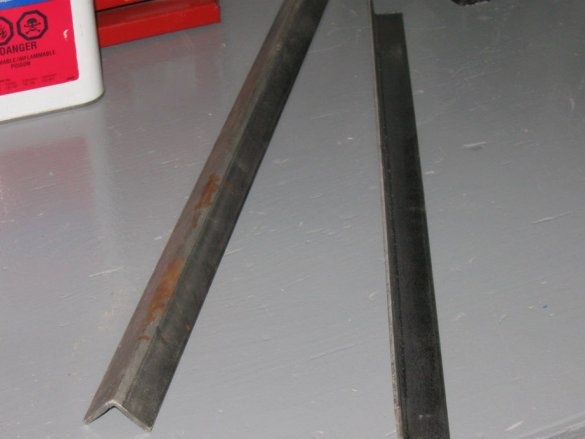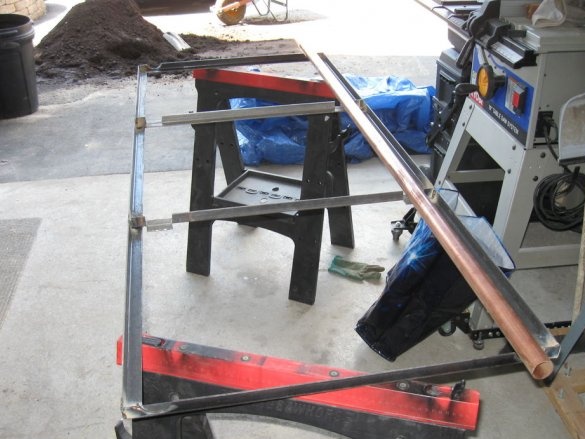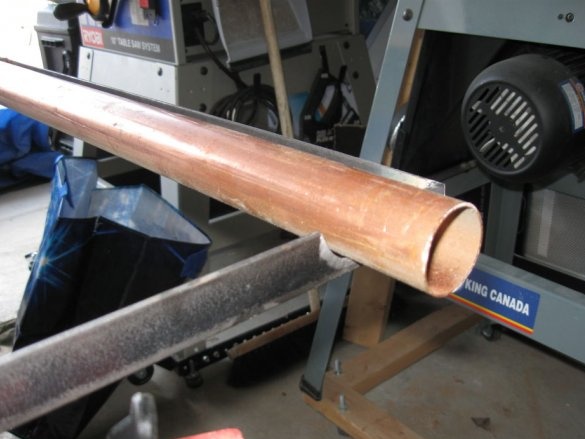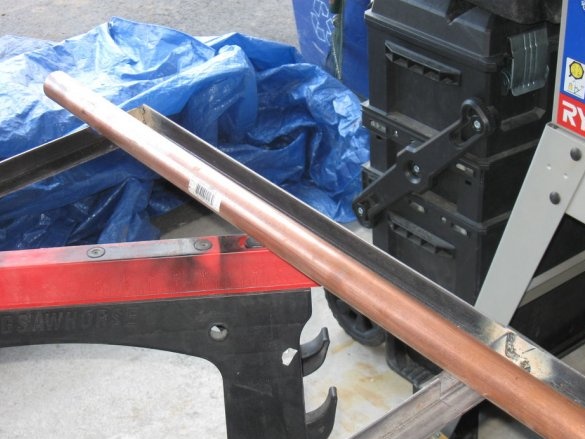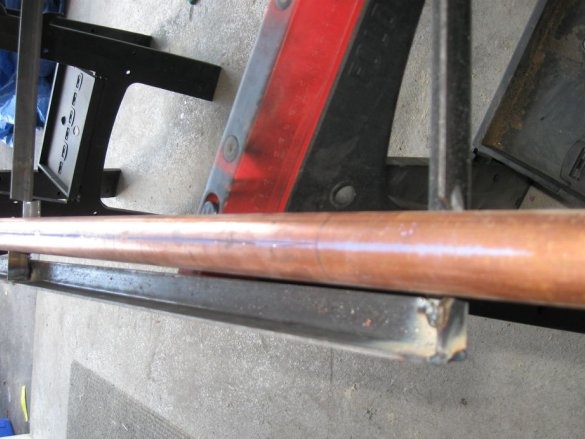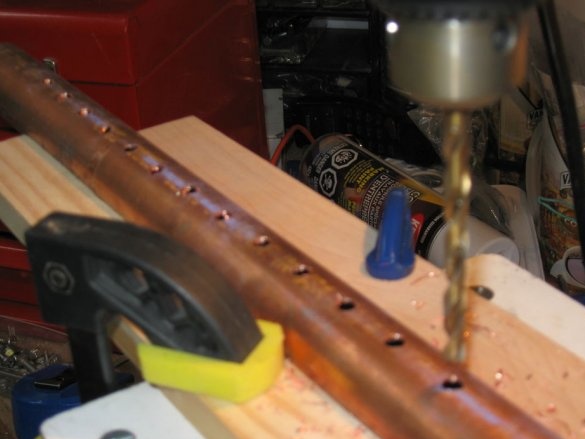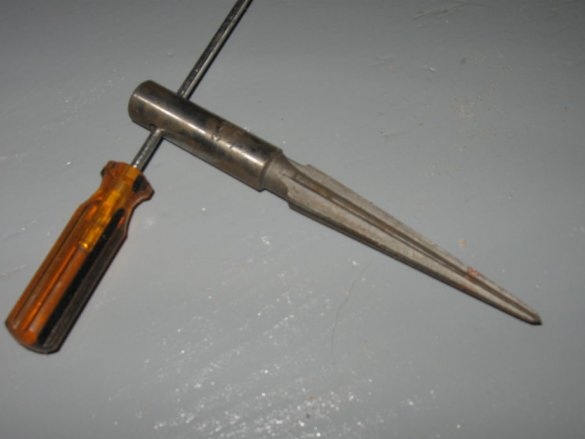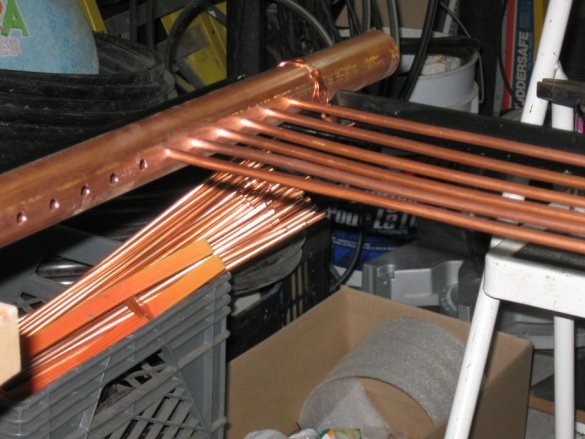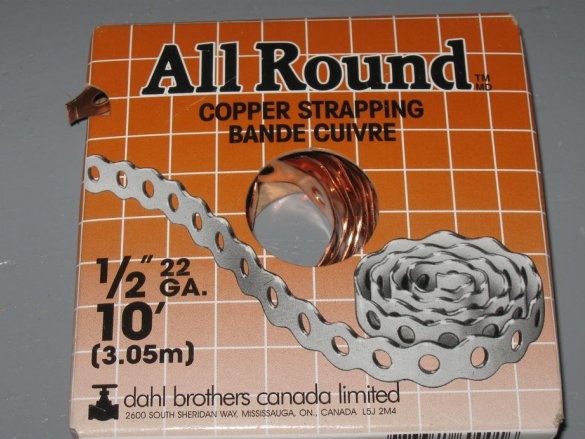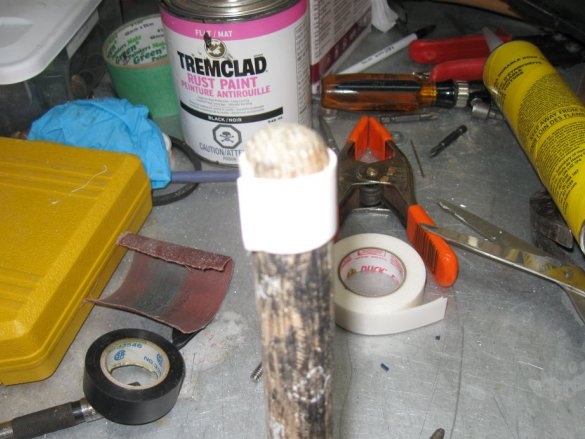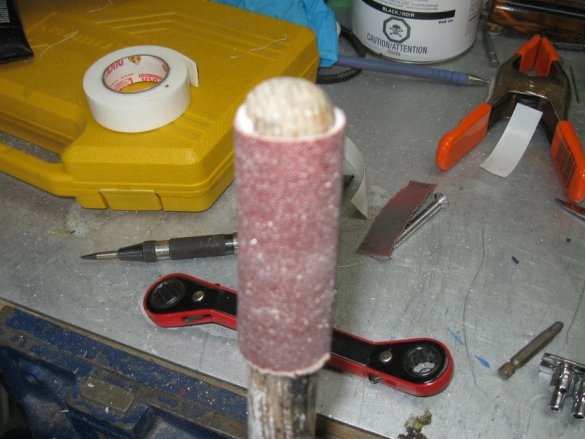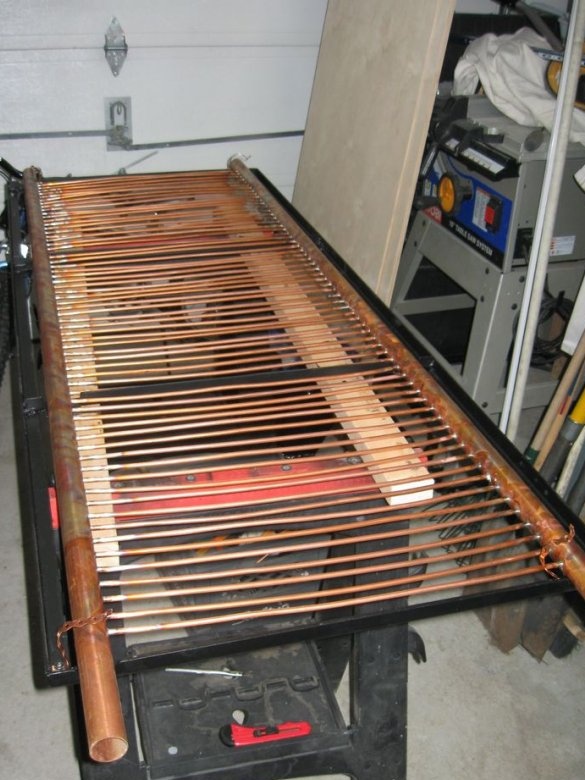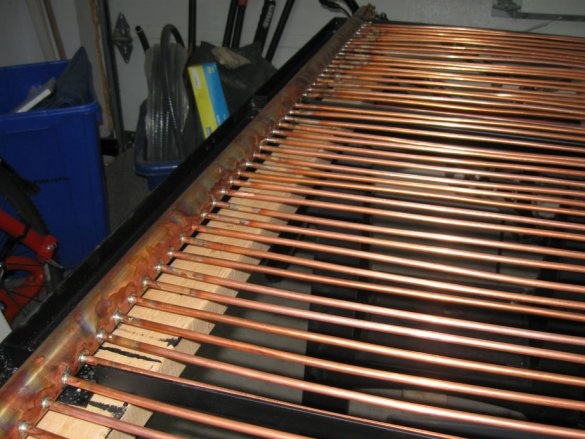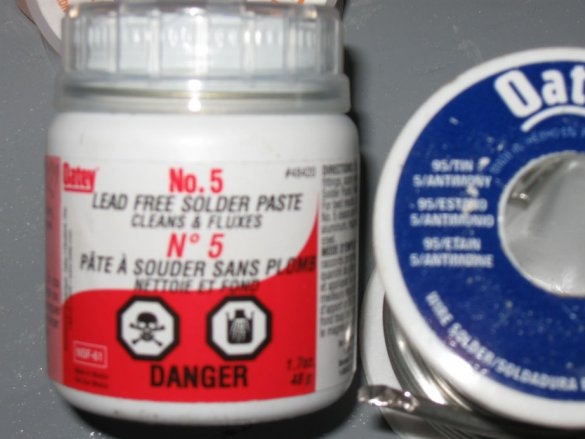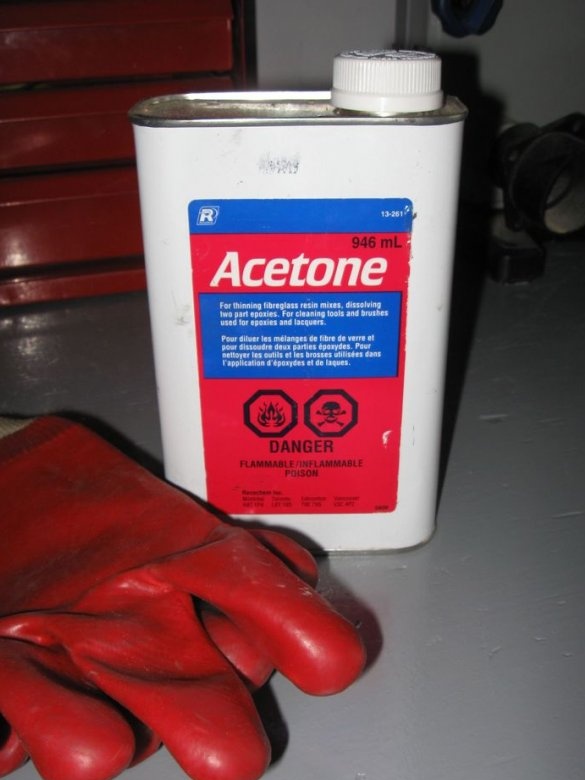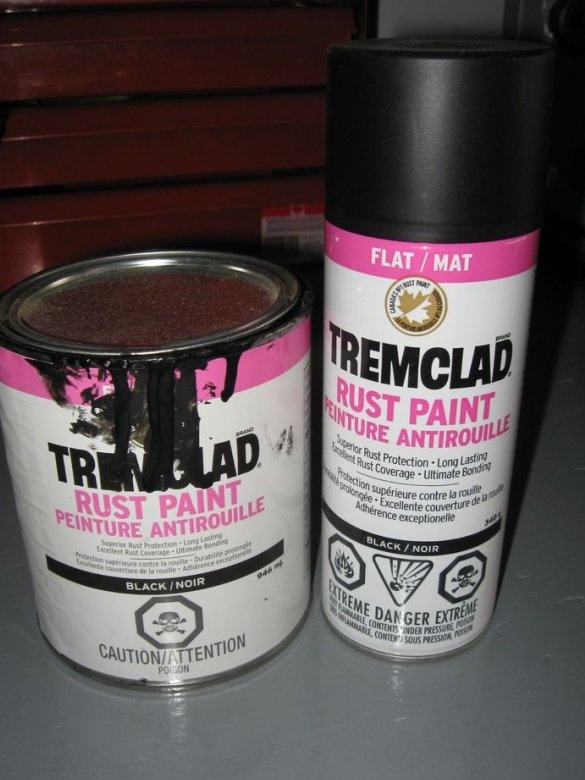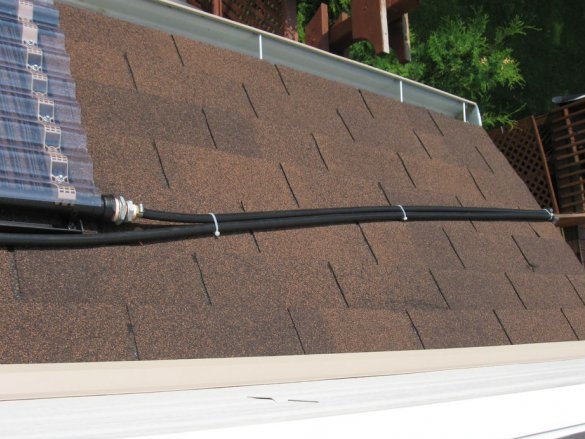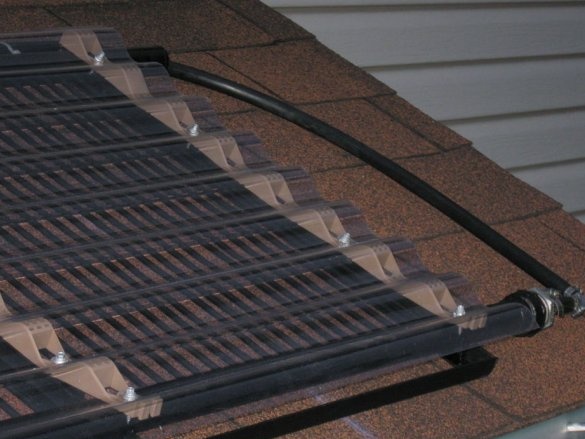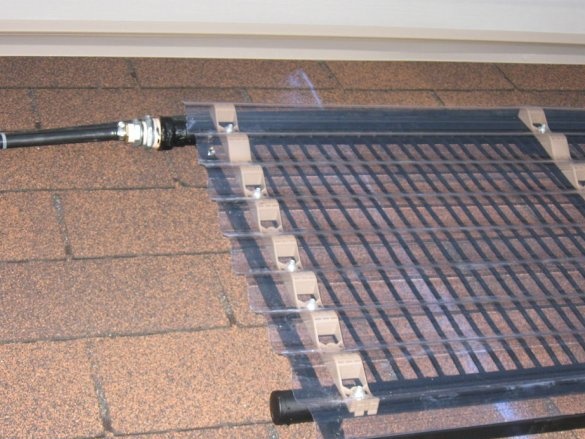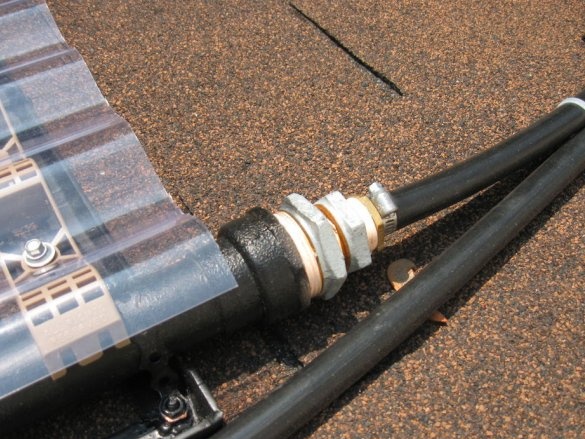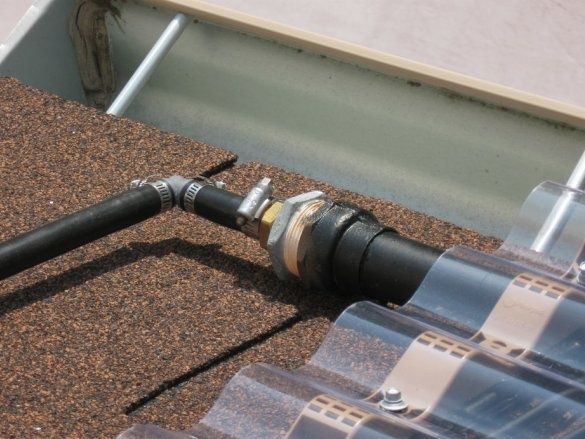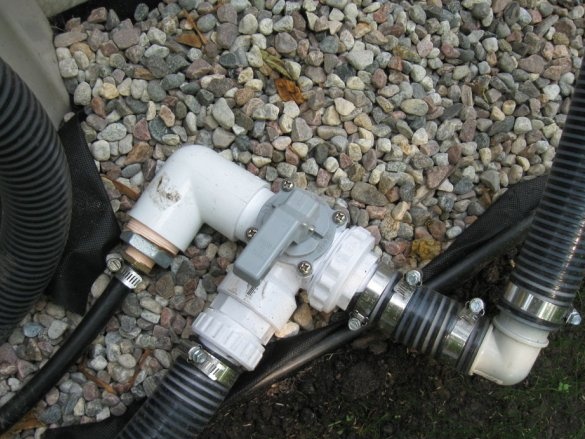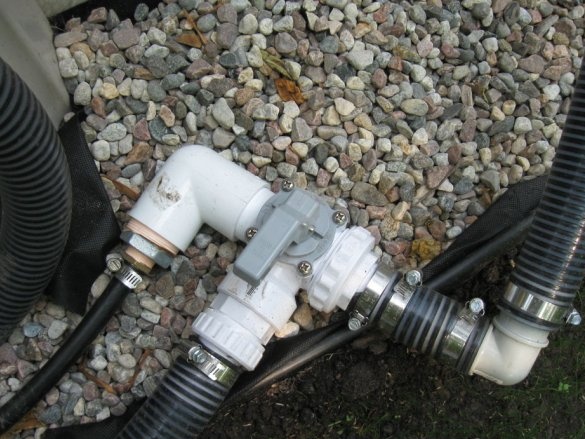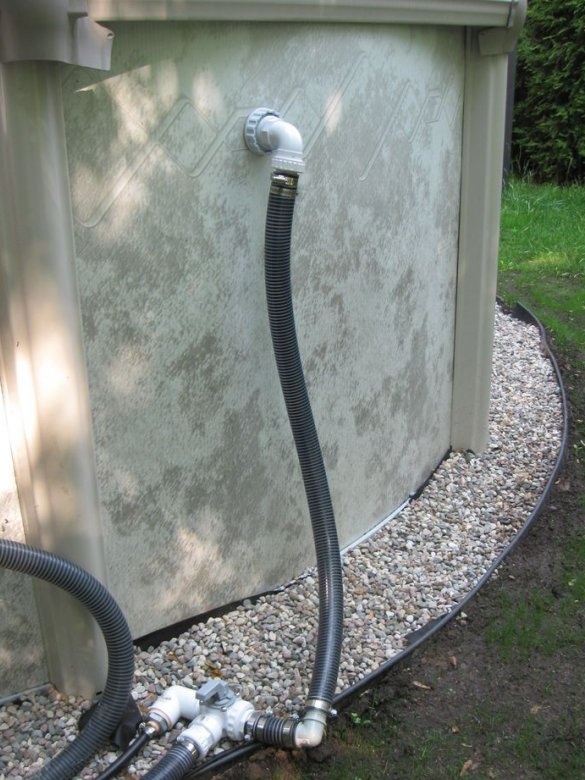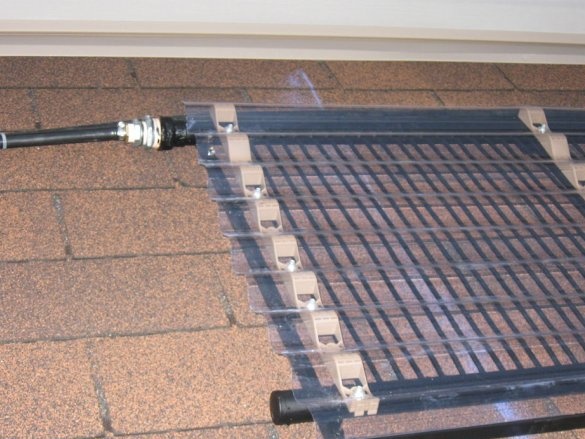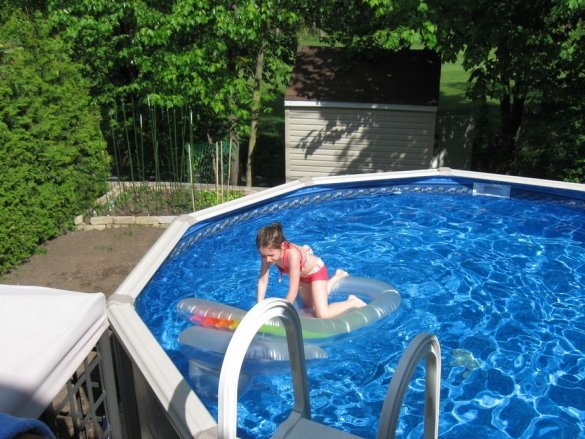Master of this homemade lives in Canada, so he needs to turn on the water in the pool for the whole summer, as it’s cool enough there.
First of all, you need to determine the location for installing the heater. This place should have as much sunlight as possible throughout the day.
Step 1: Materials and Tools
- metal corners;
- copper pipe with a diameter of 32 mm and a length of 162 cm - 2 pcs;
- 3-4 rolls of copper pipes 6 mm;
- Tin solder;
- skin;
- solder paste;
- welding torch;
- pipe cutter;
- lace;
- Automatic center punch;
- Pencil;
- roulette;
- stalk;
- Acetone or other cleaning agent that can remove solder paste;
- fumlent;
- copper punched tape;
- countersink;
- Double-sided tape;
- black paint;
Step 2: Creating a pipe mount frame
You can build a frame of wood or other material, but the master decided to build it from a metal corner.
Cut the corners along the length of the pipes to make a rectangle. On the shorter side, the master made several cuts with a hole saw to fit the pipe.
Step 3: Drilling Manifolds
Drill 6 mm holes. in a straight line in a pipe with a diameter of 32 mm to make two collectors. The master drilled holes every 50 mm. a total of 63. To make a straight line, he used a drawstring.
Insert the pipes into the frame so that you can evaluate where the start and end of the holes will be.
Thus, you will not have extra holes where the manifold pipe will be attached to the frame.
The master estimated that 63 holes of 6 mm pipe will have a diameter 3 times the diameter of 32 mm pipe. This is done so that in small pipes the flow of water slows down a little.
Slowing the flow of water helps heat transfer ...
Step 4: Drilling
The master made a conductor to align the pipe in a vise. The pipe is pre-marked and punched with a punch.
A total of 126 holes were drilled (63 per pipe).
Drills do not make perfectly round holes, so use a countersink to make it more round so that it fits as tightly as possible to 6 mm pipes.
To mark a perfectly straight line on the pipes, fasten them together with clamps, and then use the shoelaces to mark the place where the pipes touch each other.
Step 5: Trimming and fitting a 6 mm pipe
Expand and cut the 6 mm pipe to fit. Make a conductor and try to straighten the pipe by slowly bending it.It is advisable to install and secure a 32 mm pipe to the frame. Make sure that the distance between the pipes is the same.
Cut 6 mm pipes so that they are approximately 2 cm longer than the distance between 32 mm pipes.
Step 6: Preparing to Solder
As in any plumbing work with copper pipes, copper must first be prepared.
Take sandpaper and sand the oxidation where the pipes have to be soldered together.
Sand the inside of 32 mm pipes.
Attach some sandpaper using double-sided tape on the handle and sand the inside of the pipes.
Sand all 63 holes of the 6 mm pipe.
Step 7: Assembling Small Pipes in a Manifold
Insert each 6 mm pipe into the hole on each side. Insert the small pipes into one large pipe and the other edges of the small pipes into another large pipe. You can insert a wooden knitting needle to align the pipes from the inside.
Step 8: Soldering Pipes
Solder 32 mm pipes with 6 mm using solder.
Soldering is a matter of accuracy and patience. The master took about an hour and a half, he is not a professional.
At the two opposite ends (one on the top, the other on the bottom), solder the 32 mm fittings so that the adapter can be screwed from 32 mm to 20 mm.
Other ends will have a welded cap.
Please note that water must enter from one side of the first collector and exit from the other side of the second collector.
Step 9: pressure test
Before moving on, it would be nice to have a leak test.
Connect the hose to one of the 32 mm pipes and a small length of hose to the other pipe.
You can install the adapter 32/20 mm.
Turn on the water to expel the air.
After air has escaped, pass the exhaust hose.
Check each soldered seam for leaks. If any, empty the heater completely and repair.
Step 10: Cleaning
Using Acetone, clean all remaining solder paste. So you prepare the metal for painting.
Step 11: Painting
Use matte black paint in a spray can or regular paint. The master used both paints. Spray for copper, because this paint is easier to spray on small pipes. For the steel frame, the master used an ordinary brush and paint from a can.
Step 12: final assembly
Assemble the 32/20 mm adapter to reduce pipe cross-section.
Step 13: Installation
Find a good place where there is maximum sunlight all day.
Install the water heater on the roof or in any other place convenient for you.
Use a 20 mm plastic pipe from the outlet of the pool pump filter to the lower manifold.
From the upper collector of 20 mm the pipe has a return to the pool.
You can use flexible, versatile, inexpensive hoses.
You can use 90-degree angles to make it easy to lower the hoses from the roof.
Step 14: Install 3 Way Crane
Install a 3-way valve. Insert it between the filter and the pool return pipe.
Insert the pipe going to the water heater on the three-way valve.
With this faucet, you can control the flow of water entering the heater.
Step 15: Final Result
Close the water heater with corrugated polycarbonate, it is much cheaper than plexiglass.
This solution is necessary in order to protect the fragile 6 mm pipes from deflection under the weight of snow in winter, since the water heater is not planned to be removed.
According to the efficiency of the solar water heater:
Delta T (temperature difference):
With an outside temperature of 21 ° C and a pool temperature of 17 ° C, the heater converts water from 17 ° C to 22 ° C in one day.
The water leaving the heater is about 3 ° C warmer than the inlet.
Keep in mind that this data was recorded in the last weeks of May in Canada.
The sun hits the rooftop water heater from 10:00 to 15:30, i.e. 5.5 hours.
Anyone in a warmer and sunnier environment should get much better results.
The master also added some black pieces of metal under the 6 mm pipe and closed them on the sides to get more heat.
Step 16: Swimming 2nd week of May
For any south, swimming in May is normal, but for Canada it’s an exception ...
The average outdoor temperature does not exceed 21 ° C.
Pool Specification:
- 132 cm. In height;
- two-speed pump with filter;
Heater location
It is located on a small roof above the balcony, about 5.5 m higher than the pump.
First you need to pump water into the heater at a second speed. Once it is full, the pump needs to be switched to a low speed, and then it's up to gravity.

